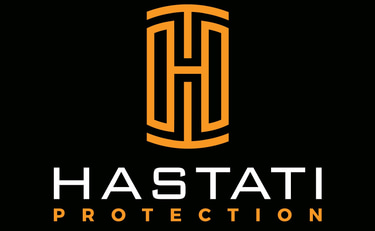Vetting Staff- Vital for Business
Vetting staff- and the level to which is appropriate- varies across businesses and sectors. It is a recognised issue within the UK in general, and there are solutions available.
8/17/20253 min read


The Core of Commercial Security: Why Thorough Vetting is Crucial
In today’s fast-paced and interconnected business landscape, trust is paramount. Whether hiring security personnel, collaborating with suppliers, or onboarding staff with access to sensitive information, a meticulous vetting process is vital for ensuring operational security, safeguarding reputation, and maintaining legal compliance. This article explores key vetting practices, supported by real-world examples that demonstrate the risks of inadequate checks.
1. Initial Background Checks: Building a Foundation of Trust
The starting point for any vetting process is verifying essential details such as identity, employment history, and criminal records. In the UK, the Baseline Personnel Security Standard (BPSS) is commonly used, particularly for roles involving access to OFFICIAL-level assets. This process confirms identity, past employment, nationality, unspent convictions, and periods spent overseas.
Why it matters: Robust initial checks prevent individuals with undisclosed criminal histories or falsified credentials from gaining access to sensitive roles, protecting businesses from potential threats.
2. Enhanced Vetting: Tailored to High-Risk Roles
For positions requiring elevated security clearance, such as Security Check (SC), Developed Vetting (DV), or Counter-Terrorist Check (CTC), more in-depth screening is necessary. These processes include financial reviews, personal interviews, and analysis of foreign connections. The level of scrutiny varies depending on the role’s sensitivity.
In practice: In high-risk sectors like transport or public-facing roles, CTC checks remain critical to ensure safety around vulnerable facilities or prominent figures.
3. Ongoing Vetting: Adapting to Change
People’s circumstances can change—financial difficulties, mental health challenges, or new regulatory issues may arise. Continuous vetting is essential in industries such as finance, healthcare, defence, and cybersecurity to address evolving risks.
Key benefits:
Early identification of risks, such as financial instability or emerging criminal activity.
Compliance with updated regulations.
Protection of critical assets, sensitive data, and vulnerable groups.
Automated monitoring tools can provide real-time alerts if an individual appears on a regulatory watchlist or exhibits sudden financial red flags.
4. Supplier and Vendor Vetting: Choosing Secure Partners
Third-party relationships can introduce significant risks. Comprehensive vetting of suppliers involves due diligence, leveraging data analytics to assess financial stability, ownership structures, compliance history, and public reputation. Advanced technologies, such as blockchain, can enhance transparency by creating secure, tamper-proof audit trails, as demonstrated in cloud migration case studies.
Why it matters: Partnering with unreliable vendors can expose businesses to financial, operational, or reputational damage.
5. Insider Threats: Mitigating Risks from Within
Internal threats—whether from malicious intent, negligence, or compromised credentials—pose significant challenges. Thorough vetting at the hiring stage, combined with ongoing monitoring, helps identify potential risks early. In the UK, insider-related incidents cost businesses an average of £13 million, with some cases causing reputational damage exceeding £100 million.
Real-World Lessons: The Cost of Inadequate Vetting
a) Washington Navy Yard Incident (2013)
A civilian contractor, Aaron Alexis, accessed secure facilities despite known mental health concerns. Inadequate vetting by the background-check provider failed to flag these issues, resulting in a tragic incident that claimed 12 lives. This case underscores the need for rigorous checks and continuous monitoring.
b) Flawed Vetting Processes: The USIS Case
The same provider, USIS, was implicated in vetting Edward Snowden. Investigations revealed systemic issues, including allegations of fraudulent shortcuts to meet targets, compromising the integrity of the process.
c) UK Security Worker Oversight
A UK security worker requested that their employer skip reference checks during onboarding. Weeks later, negative feedback from a referee led to their removal, highlighting the critical role of thorough reference verification.
d) Driving Licence Verification Success
A facilities management company avoided a costly hiring mistake by discovering an applicant’s suspended driving licence with 12 penalty points. Swift vetting saved time and resources by allowing a quick pivot to a suitable candidate.
e) Third-Party Vendor Risks
A hiring manager rejected a vendor with a history of data breaches and poor security practices, such as unencrypted laptops. This decision prevented potential exposure to significant security risks.
Best Practices for a Robust Vetting Framework
To build an effective vetting programme, businesses should adopt the following strategies:
Classify Roles by Risk: Tailor vetting processes to the sensitivity and access level of each role.
Use Comprehensive Checks: Combine identity, criminal, financial, employment, and reference verifications.
Implement Continuous Monitoring: Employ automated tools to detect new risks throughout employment or supplier relationships.
Leverage Advanced Technology: Use data analytics and blockchain for transparent, secure vetting processes.
Ensure Legal Compliance: Adhere to UK data protection and employment laws while maintaining transparency with employees.
Define Red Flag Protocols: Establish clear procedures for addressing concerns, such as delaying onboarding or conducting further investigations.
Train Teams: Equip HR and security staff with the knowledge to handle vetting processes and escalations effectively.
Maintain Audit Trails: Document processes and regularly update them to address emerging threats.
Conclusion: Proactive Vetting for Business Resilience
Vetting is not a one-off task but a continuous commitment to safeguarding businesses, employees, and reputations. From the tragic Washington Navy Yard incident to UK-specific cases of oversight, the consequences of lax vetting are clear. By investing in thorough, adaptive, and technology-driven vetting processes, businesses can mitigate risks and build resilience in an increasingly complex threat landscape.
Effective vetting is more than a precaution—it’s the foundation of trust and security in modern commerce.
Company Details:
Hastati Protection Ltd
Company No: 15129088
ICO Registration Number: ZB596628
Address
71-75 Shelton Street, Covent Garden, London, WC2H 9JQ
Contacts
contact@hastatiprotection.com
0330 1336268
